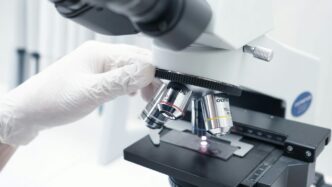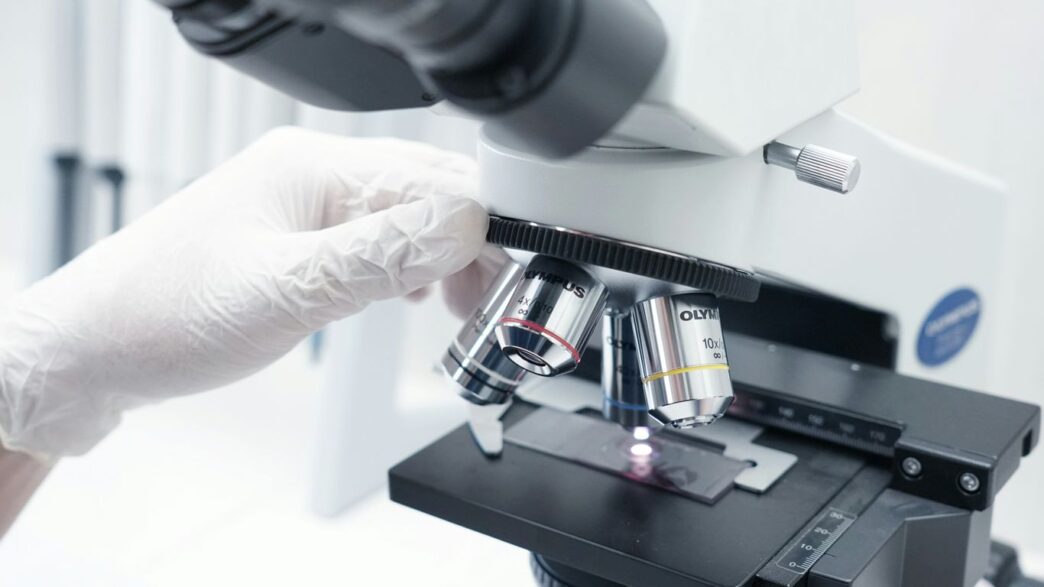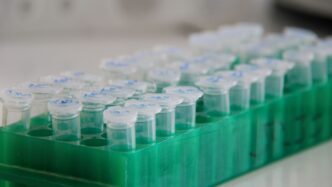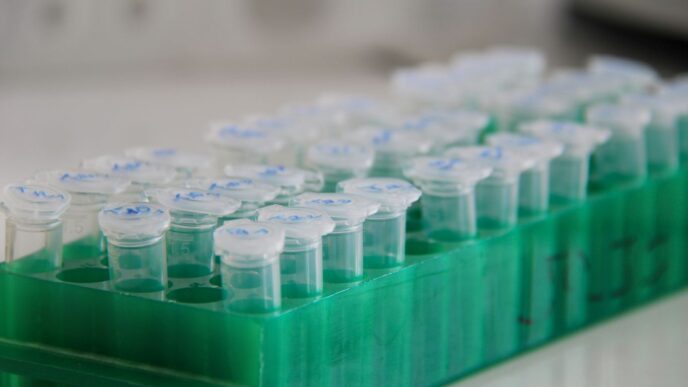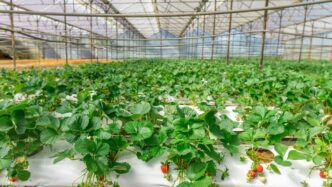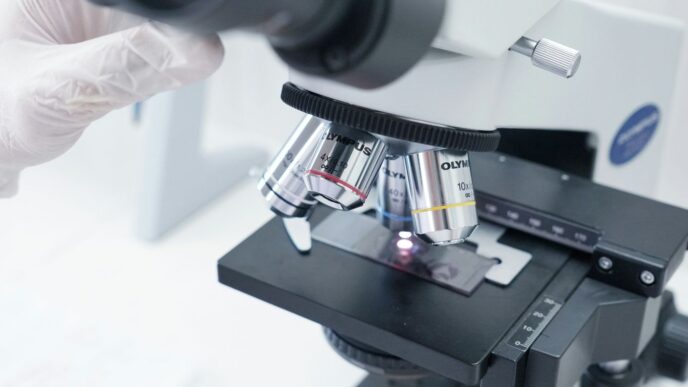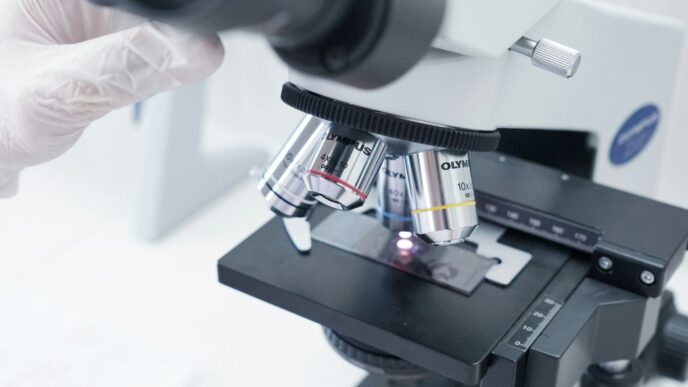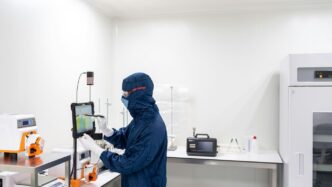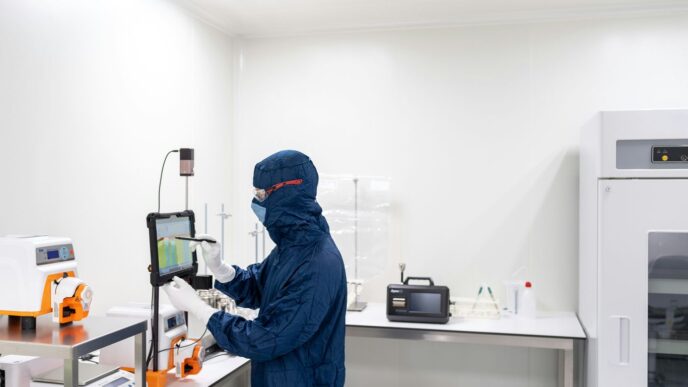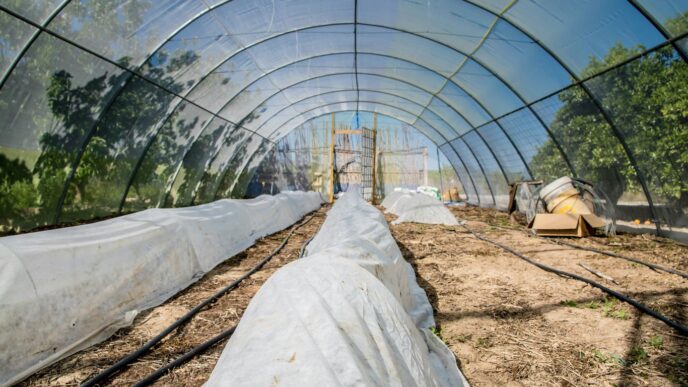The world of biotech is moving at a speed that’s hard to keep up with. From new ways to discover medicines to how we talk about science with everyone, there’s a lot happening. We’ve been checking out what people are discussing on r/biotech to get a feel for the latest trends and conversations. It turns out there’s a whole lot of innovation, a big role for AI, and important talks about trust and who gets to be part of this field.
Key Takeaways
- Biotech innovation is speeding up, but getting new ideas into real products takes time. This dual pace means we need smart rules and careful thought.
- AI is becoming a major player, helping design molecules and even run experiments, which could change how science is done.
- Building public trust is super important. Talking openly about risks and including people in the process helps.
- Making biotech more diverse and fair is a big deal, fixing past mistakes and making sure everyone has a chance to be involved.
- Getting communities involved in research through citizen science and other methods can help biotech meet local needs and build stronger relationships.
The Accelerating Pace Of Biotech Innovation

It feels like every week there’s some new breakthrough in biotech, doesn’t it? Things are moving so fast, it’s hard to keep up. We’ve gone from just looking at biology to really understanding it, then to being able to read its code, and now we’re actually writing it. This isn’t just about making new medicines, though that’s a huge part of it. We’re talking about changing how we grow food, create materials, and even generate energy. It’s a massive shift.
Bridging The Gap Between Discovery And Application
One of the biggest conversations happening on r/biotech right now is about how quickly we can get from a cool idea in the lab to something that actually helps people. The speed of discovery is incredible, but translating that into a real product, like a new therapy or diagnostic tool, still takes a lot of time. Think about it: designing a new molecule with AI might take minutes, but then you have to grow cells, run tests, and go through clinical trials. That part is still bound by the slow, steady pace of biology itself. It’s a bit of a puzzle for everyone involved, from scientists to regulators.
The Dual Tempo Of Research And Development
This difference in speed creates a weird situation. On one hand, we have these super-fast digital tools that can churn out ideas and designs almost instantly. On the other, the actual biological stuff we’re working with takes its own sweet time to grow, change, and show results. This means:
- Discovery: New concepts and potential treatments can be dreamed up and even designed in silico in weeks or months.
- Development: Scaling up production, conducting safety tests, and getting regulatory approval can take years.
- Implementation: Getting a new technology or therapy into the hands of the public and seeing its long-term effects is an even longer game.
It’s like having a race car engine that can go 300 mph, but you’re stuck on a dirt road. We need ways to speed up the ‘dirt road’ part without cutting corners on safety.
Embracing Technological Convergence With Humility
We’re seeing all sorts of technologies coming together – AI, gene editing, advanced robotics, and big data. It’s exciting, but it also means we have to be careful. We need to remember that biology is incredibly complex, and our interventions can have effects we don’t expect, sometimes for a long time. It’s not just about the immediate results in the lab; it’s about the bigger picture, the environment, and future generations. So, while we push the boundaries, a healthy dose of caution and a commitment to understanding the full impact are really important.
AI’s Transformative Role In Biotechnology
It feels like just yesterday we were marveling at how computers could help us read DNA. Now, artificial intelligence is doing way more than just reading; it’s starting to write and even predict what’s next in biology. This isn’t science fiction anymore; it’s happening right now in labs and on computers all over the world.
Predicting Novel Molecule Designs
Think about it: AI can look at massive amounts of biological data, way more than any human team could ever process. From this, it can come up with entirely new molecule designs that no one has ever thought of before. This is a huge deal for drug discovery. Instead of scientists spending years trying to find a promising compound, AI can suggest candidates in a fraction of the time. We’re already seeing drugs designed this way making their way through clinical trials for serious conditions like lung fibrosis and various cancers. It’s like having a super-powered assistant that can brainstorm possibilities at an incredible speed.
AI-Assisted Experimentation And Hypothesis Generation
AI isn’t just about suggesting designs; it’s also changing how experiments are planned and carried out. AI systems can analyze existing research, identify gaps in our knowledge, and then propose new experiments to fill those gaps. They can even help generate hypotheses that scientists might not have considered. Imagine an AI looking at all the data on a particular disease and saying, "Hey, have you considered this specific protein interaction? The data suggests it could be a key factor." This kind of intelligent suggestion can really speed up the scientific process. Some advanced systems are even starting to control lab equipment, automating parts of the research that used to take a lot of hands-on time.
Blurring Boundaries In The Scientific Process
What’s really interesting is how AI is starting to blur the lines between different parts of scientific work. Traditionally, you had distinct steps: collecting data, analyzing it, forming a hypothesis, designing experiments, and then executing them. Now, AI can jump between these stages. An AI might analyze data, generate a hypothesis, suggest an experiment, and even help interpret the results, all in a continuous loop. This creates a much faster cycle of discovery and innovation. The speed at which new insights can feed back into the design process is unlike anything we’ve seen before. However, this rapid pace also means we need to be thoughtful. While AI can design things quickly, biology itself still operates on its own timeline. Testing and validating these AI-generated ideas still requires careful, real-world observation, and that takes time. It’s a dual tempo we’re all learning to manage.
Community Engagement And Public Trust In Biotech
Addressing Public Concerns And Risk Aversion
Look, biotech is doing some pretty amazing things, right? We’re talking about stuff that could help with diseases, make farming better, and even clean up the environment. But let’s be real, not everyone is jumping for joy. A lot of people have worries, and honestly, that’s understandable. When you hear about new technologies, especially ones that mess with biology, it’s natural to wonder about the risks. Are these things safe? Who’s watching to make sure they don’t cause problems down the line? These aren’t silly questions; they’re important ones.
Think about it like this: if a new medicine comes out, you want to know it’s been tested thoroughly, right? Same idea here. People are often a bit hesitant about new biotech, and that’s often because they’re not sure about the potential downsides. It’s not that they’re against progress, but they want to feel confident that the benefits outweigh any potential harm. Building that confidence means being upfront about what we know and what we don’t know.
Here’s a quick look at what seems to get people thinking:
- Safety: Is it safe for us, for animals, for the planet?
- Control: Who is in charge of these technologies, and how are they being managed?
- Fairness: Will everyone benefit, or will it just make things worse for some people?
- Unforeseen Effects: What happens if something goes wrong that nobody expected?
Getting these questions answered clearly and honestly is a big part of making people feel more comfortable with biotech advancements.
Building Trust Through Inclusive Design Processes
It’s easy for scientists and companies to get caught up in the technical details of their work. They’re focused on the molecules, the genes, the experiments. But the people who will be affected by these technologies – that’s everyone else! And if those people don’t feel like they have a say in how things are developed, well, trust isn’t going to happen. We’ve seen this before, where decisions were made without really listening to the communities involved, and it didn’t end well. Think about historical examples where people’s data or samples were used without their full understanding or consent. That kind of stuff creates a deep well of mistrust that’s hard to fill.
So, what’s the fix? It’s about bringing people into the process much earlier. This isn’t just about giving a presentation and taking questions at the end. It’s about actually listening to what communities need and want, and then letting that feedback shape the research and development. It means involving people from different backgrounds, different walks of life, and different parts of the world, especially those who might be most impacted. When people feel heard and see their input making a difference, they’re much more likely to trust the outcomes.
The Importance Of Transparency And Communication
Okay, so we’ve talked about listening and involving people. But how do we actually get the word out and keep people in the loop? This is where clear, honest communication comes in. It’s not enough to just do good science; you have to be able to explain it in a way that makes sense to people who aren’t scientists. That means avoiding super technical language and getting straight to the point about what the technology does, why it matters, and what the potential upsides and downsides are.
Imagine trying to understand a complex medical study from a dense academic paper. Most people would just tune out. But if someone explained it using everyday words, maybe with a simple diagram or a real-life example, it would be a whole different story. This is what biotech needs to do more of. It’s about being open about the research process, including the challenges and uncertainties. Sharing information through different channels – not just scientific journals, but also community meetings, accessible websites, and even social media – can help reach a wider audience. When people feel like they’re getting the full picture, and that the people behind the science are being upfront, it really helps build that bridge of trust.
Diversity And Inclusion In The Biotech Sector
It’s no secret that the biotech world has a bit of a diversity problem. For a long time, certain groups have been left out, and that’s not okay. We’re talking about historical wrongs, like how some communities’ data was collected without their full agreement, or how research was designed without asking the people it was supposed to help. This kind of stuff erodes trust, and frankly, it’s just not right.
Rectifying Past Harms And Historical Exclusions
We need to actively work on fixing these past mistakes. It means being upfront about what happened and making sure it doesn’t happen again. Think about the HeLa cells story, or clinical trials that weren’t fair to people in developing countries. These aren’t ancient history; they have real impacts on how people view biotech today. We have to acknowledge these issues and show through our actions that we’re committed to doing better. It’s about building bridges, not walls.
Enhancing Representation In Leadership Roles
Look at the numbers, and you’ll see a clear pattern. In the US, most leadership jobs in biotech are held by white individuals. That’s a huge gap. We need more people from different backgrounds, different ethnicities, and different life experiences in charge. When leadership reflects the diversity of the world, decisions get made with a wider range of perspectives in mind. This isn’t just about fairness; it’s about making better science.
Here’s a snapshot of management positions in US biotech:
| Group | Percentage of Management Positions |
|---|---|
| Non-Hispanic White | 75% |
| Asian | 16.5% |
| Hispanic/Latino | 3.8% |
| Black/African American | 3.1% |
Fostering An Inclusive Scientific Mainstream
So, how do we actually make biotech more inclusive? It’s a multi-step process:
- Education and Outreach: We need to reach out to communities that have been historically excluded. This means going beyond just talking at people and actually engaging them in conversations about what biotech can do for them.
- Mentorship Programs: Creating programs that support and guide individuals from underrepresented groups as they build their careers in biotech is key.
- Reviewing Practices: Constantly looking at our own research and development processes to make sure they are fair, ethical, and consider the needs of diverse populations.
Ultimately, a more diverse and inclusive biotech sector will lead to more innovative solutions that benefit everyone. It’s about making sure that the incredible potential of biotechnology is accessible and beneficial to all parts of society, not just a select few.
Citizen Science And Participatory Research
It’s pretty cool to see how regular folks are getting more involved in biotech these days. We’re not just talking about people reading articles; we’re talking about actual participation. Two big ways this is happening are through citizen science and community-based participatory research, or CBPR for short. Think of citizen science as the public lending a hand in research. This could mean anything from collecting samples out in the field to helping sort through data. For instance, there are online games where people help design things like mRNA vaccines or tools for gene editing. It’s like a massive, collaborative puzzle.
But it’s not always easy for everyone to jump in. Sometimes, not having the right tech, language barriers, or just figuring out what the data means can be a hurdle. That’s where CBPR comes in. This approach is all about bringing community members into the research process from the very beginning. They bring their own knowledge and experiences to the table, helping shape the questions asked and how the research is done. It’s about building on what communities already know and do, learning together, and keeping that partnership going over time.
Here are some ways this is playing out:
- Public Involvement in Data Collection and Analysis: People can contribute by gathering environmental samples, monitoring local wildlife, or even analyzing images for patterns. Online platforms make it easier to share this information.
- Overcoming Bottlenecks to Broad Participation: Researchers are working to make projects more accessible. This includes offering materials in different languages, providing training, and ensuring technology is available or adaptable for various settings.
- Community-Based Research for Local Needs: Biotech tools are being used to address specific community health issues. For example, projects have used diagnostic tools to help with HIV screening in churches or cervical cancer screening in underserved areas. This hands-on involvement helps build trust and ensures that research is relevant to the people it aims to serve.
Emerging Hubs And Policy For Biotech Growth
It’s pretty wild to see how quickly new places are becoming hot spots for biotech. We’re not just talking about the usual suspects anymore. Take Houston, for example. It’s really stepping up its game. They recently landed a massive $6.5 billion manufacturing project with Eli Lilly, which is huge. Plus, they’ve got a new Center for Biotechnology at San Jacinto College. Even a national group looking at new biotech, the NSCEB, paid them a visit to see what makes them tick. It seems like a lot of different industries there – health, space, energy, manufacturing, and schools – are all talking to each other, which really speeds things up.
Governmental Support For Biomanufacturing
Governments are starting to pay more attention to biomanufacturing, and it makes sense. It’s not just about making medicines; it’s about creating jobs and boosting the economy. The NSCEB’s visit to Houston is a good example of this. They’re traveling around, checking out these growing biotech areas to figure out how policy can help them grow even more. They found that when the government steps in to help private companies invest, that’s when things really take off. It’s like a partnership that benefits everyone.
Leveraging Public-Private Partnerships
These partnerships are becoming super important. It’s not just one group doing all the work. You’ve got universities, companies, and government agencies all chipping in. The new biomanufacturing center at San Jacinto College, for instance, is a result of a lot of local groups working together to train people for jobs. This kind of teamwork is what helped attract Eli Lilly to the area. It shows that when different players collaborate, they can achieve big things.
Informing Policy Through Regional Insights
What’s really interesting is how these local hubs are helping shape national policy. The NSCEB is using what they learn from places like Houston to inform their recommendations. They’re talking to everyone – researchers, business folks, community leaders – to get a real picture of what’s working and what’s not. This kind of on-the-ground information is key to making smart policies that actually help the biotech industry grow across the country. The goal is to create policies that are clear, easy to understand, and show people how biotech can benefit their lives and communities.
Looking Ahead
So, what’s the takeaway from all this? Biotechnology is moving at a breakneck pace, with new tools and discoveries popping up constantly. It’s exciting, for sure, but it also means we need to be smart about how we handle it all. Balancing the speed of new ideas with the reality of putting them into practice is a big challenge. Plus, getting everyone on board and building trust is super important, especially since these changes can affect so many people. The r/biotech community is a great place to keep up with these fast-moving developments and to hear different viewpoints as we figure out the best way forward together. It’s a wild ride, and it’s only just beginning.
Frequently Asked Questions
What is biotechnology and why is it moving so fast?
Biotechnology is like using living things, such as tiny cells or DNA, to make useful things like medicines or new materials. It’s moving super fast because new tools and computer programs are helping scientists discover and create things much quicker than before. It’s like going from writing letters to sending instant messages!
How is Artificial Intelligence (AI) helping in biotech?
AI is like a super-smart assistant for scientists. It can look at tons of information and help invent new medicines or figure out how to do experiments. AI can even help design experiments and guess what might happen, making science discoveries happen faster.
Why is it important for people to trust biotech?
Biotech can help us a lot with health and the environment, but some people worry about it. Building trust means scientists need to talk openly about their work, explain the good and the bad, and listen to people’s worries. It’s like being honest with friends.
What does ‘diversity and inclusion’ mean in biotech?
It means making sure that biotech is fair for everyone, no matter their background. It’s about fixing past mistakes where some groups were left out and making sure people from all walks of life are included in making and benefiting from biotech discoveries.
What is ‘citizen science’ in biotech?
Citizen science is when regular people, not just scientists, help with research. This could be by collecting information or even helping to analyze it. It’s a way for everyone to get involved in scientific discovery and make sure research helps local communities.
How are governments helping biotech grow?
Governments can help by providing money and support for building new biotech factories and research centers. They also work with companies and universities to share ideas and figure out the best ways to make biotech grow and help everyone.

